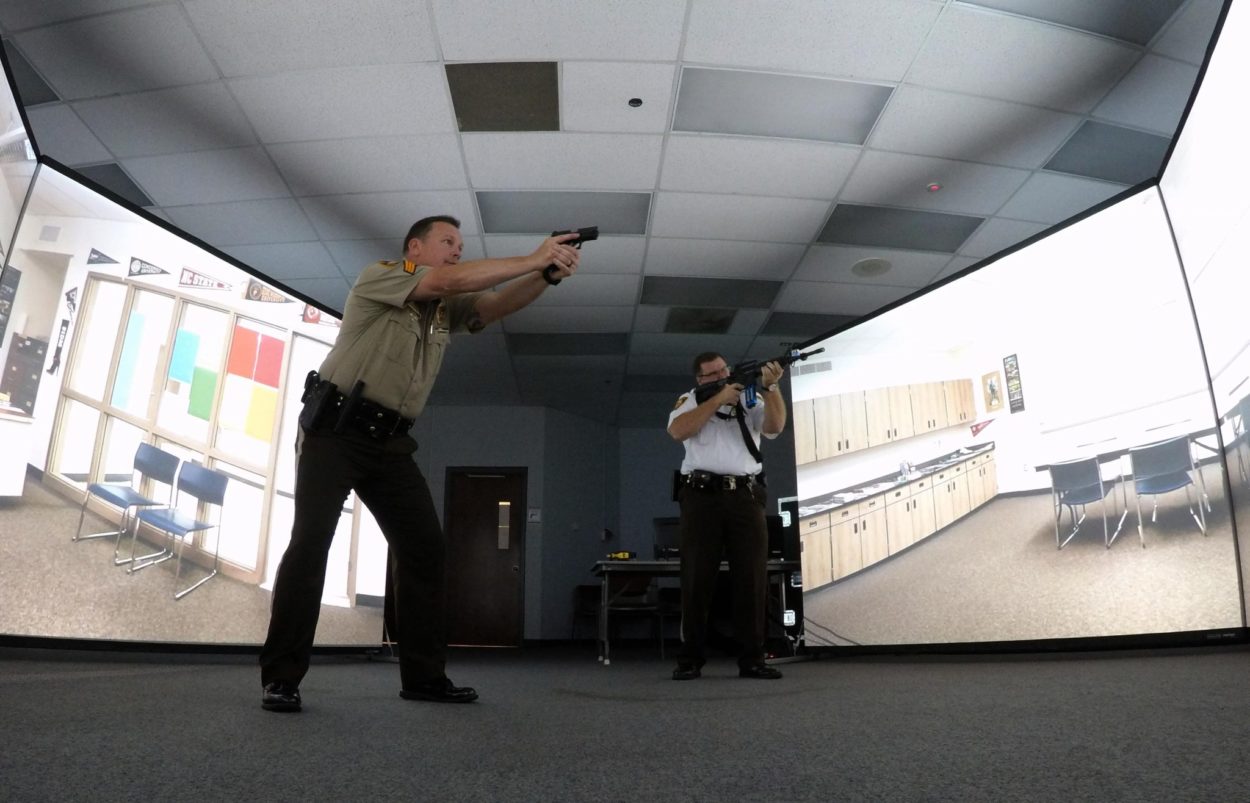
Use of force simulators are the next best thing to real-world experience when it comes to police officers and other law enforcement officials. While every officer hopes he or she is never in a situation requiring the use of a firearm, it is vital that they train themselves to handle various situations before they occur. That’s why use of force simulators are becoming so very popular among law enforcement agencies today.
Complementary Practice without the Inherent Danger
Use of force training simulators are perfect for field training police officers because they complement the things these officers learn during their academy time. In their pre-employment training, officers learn about their firearms and the different weapons they may need to use on the job, and they are even trained in their use at a firing range quite regularly. However, this training cannot prepare officers for real-world scenarios. At the end of the day, the officers are learning about their firearms, but they are firing at targets – not people that may pose a threat to their lives.
This is where judgmental use of force simulator training truly shines. When paired with the more basic training in the classroom and at the firing range, it teaches officers how to react and respond when there is a true threat. Of course, the threat is simulated on a screen, as is the firearm, but today’s technology allows simulator designers and developers like VirTra create realistic effects. Everything is simulated, from the kick of the firearm to the way the subject reacts and responds to the officer’s actions.
Hundreds of Scenarios
Though traditional training is important and simulation certainly cannot replace it, law enforcement agencies and police departments across the country continue to realize the value that real-world training simulation can provide. With simulators from VirTra, for example, it is possible to simulate hundreds of scenarios officers might face on the job. This gives them the opportunity to experience potentially dangerous events before they occur, and it trains them to learn how to make split-second decisions about the use of force.
What’s more, these simulators are programmable, as well. This allows for agencies and departments to create their own scenarios based on the specific areas where they feel their officers could use more training. For example, if officers need more training when it comes to hostage situations, the software and system can be programmed to allow for this. The possibilities are truly endless, and it is one of the most lifelike ways to train officers for things they may experience out in the field – even during what would appear to be a routine traffic stop.
Agencies in numerous parts of the country continue to recognize the value in adding judgmental use of force simulators to their training schedules. With them, officers can feel truly prepared when they go out into the field, which allows them to use better judgment when faced with unexpected or difficult situations.
Recently Published
Join Our Newsletter







